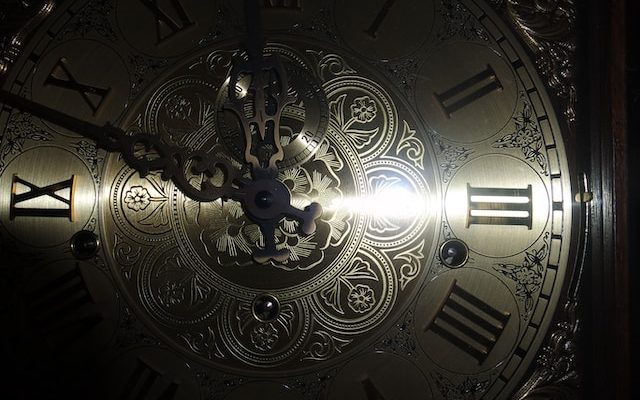Representative image of Daylight Saving by Brooke Campbell on unsplash
#DaylightTimeEnds; DaylightTime; #Canada; #Yukon; #Saskatchewan; #OriginsOfDaylightSavingTime
CMEDIA: Daylight time ends reportedly this weekend for most Canadians when they will turn their clocks back by an hour early Sunday morning.
People enjoy an extra hour of daylight at the end of the day, during daylight time Sunday morning and transitions to standard time in most provinces and territories.
The change means evenings would see darkness earlier, while mornings will be lighter earlier.
But daylight saving is not present in Yukon and most of Saskatchewan, where clocks stay unturned year-round.
Drivers, pedestrians and cyclists in bigger cities like Mississauga, Ont., are being reminded to be alert on the roads during and after the shift back to standard time.
The City of Toronto has reportedly launched the Vision Zero campaign to remind road users of reduced visibility. More information about this is available in Vision Zero webpage.
Although health complications like headaches and heart problems are associated with seasonal time changes, Toronto-based veterinary behaviourist Karen Van Haaften was reported saying that our pets too can feel the effects.
Van Haaften adds that this is because their schedules are closely linked to their owners’ daily routines.
This means their feeding, exercise and medication schedules will be delivered an hour later than usual when the clocks fall back and recommends tweaking those routines by 10 or 15 minutes a day in the stretch leading up to or after the time change to help furry friends adjust.
The origins of daylight saving time have been attributed reportedly to various people and reasons, some attributed this change to farmers so they could have more daylight, but farmers reportedly didn’t support the time change when it was adopted in the early 20th century.
While others have said this practice was started by Benjamin Franklin back in 1784 when he wrote a satirical essay for the Journal de Paris proposing regulations to ensure early risers.
Still others claimed that daylight saving time was initiated by George Hudson, a New Zealand entomologist in 1895 inspired by his bug-collecting passion, as he wanted more daylight after his shift work to collect insects.
But according to the Congressional Research Service, clocks really started to roll back in 1916, when Germany became the first country to observe daylight saving time to conserve fuel.
Other European countries followed suit, and then in 1918, the U.S. started to use daylight saving time.





